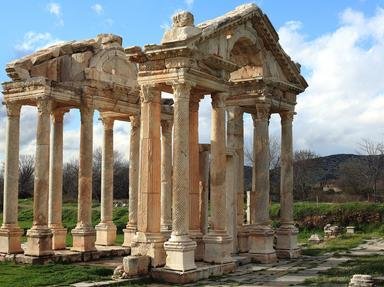Quiz Answer Key and Fun Facts
1. Singing women with animal lower bodies
2. Personalization of a noble character
3. Greek soldier with a very loud and clear voice
4. Giant beast living in a cave near Delphi
5. One of the moon goddesses
6. Sea monster guarding a narrow strait
7. Bathing nymph, joined with Hermaphroditus
8. Creature with a human face on a lion's body
9. One of the five potter's Daemons
10. One of the goddesses of the underworld, named after a river
Source: Author
JanIQ
This quiz was reviewed by FunTrivia editor
ponycargirl before going online.
Any errors found in FunTrivia content are routinely corrected through our feedback system.
